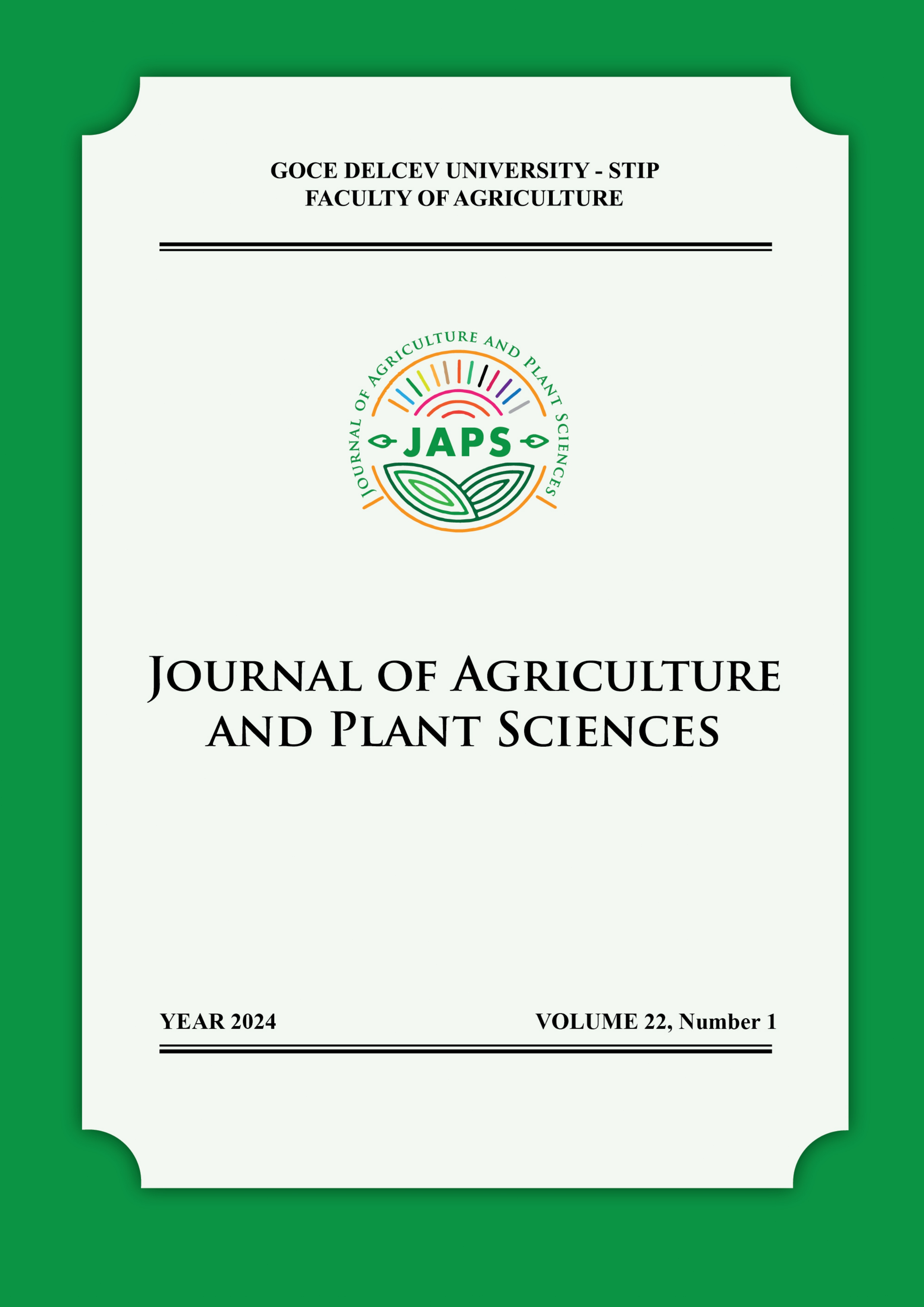BIOLOGICAL CONTROL OF GREEN MOULD DISEASE AND MUSHROOM FLY USING BIOFUNGICIDE BACILLUS SUBTILIS CH-13 AND BOTANICAL INSECTICIDE AZADIRACHTIN (TECHNICAL SOLUTION)
DOI:
https://doi.org/10.46763/JAPS24221033pAbstract
The result of this study was accepted technical solution of disease/pest control of cultivated mushroom (Agaricus bisporus L.) based on biological pesticides (Biogenesis d.o.o., Serbia): microbial biofungicide Bacillus subtilis Ch-13 (Ekstrasol 1×108 CFU/cm3) and botanical bioinsecticide azadirachtin (Ozoneem trishul 1 %). Effectiveness of bio/pesticides in disease/pest control and impact on mushroom yield were evaluated in large and small-scale experiments. Efficacy of biofungicide in control of Trichoderma aggressivum Samuels and W. Gams (green mould disease) was evaluated in comparison with chemical fungicide prochloraz (2×1.5 mL). Biofungicide was applied in different procedures, in two (2×30 mL/m2), three (30 + 2×15 mL/m2), or six split doses (6×10 ml/m2). The highest statistically significant effectiveness in pathogen control was shown in three (53.57-58.43%) and six doses (63.05%), that could be recommended. Biofungicide significantly improved yield in all different procedures, compared with untreated control in small-scale experiements 6.11-12.12% and in large-scale 5.07-8.41%. The impact of the bioinsecticide azadirachtin (4 × 0.5 ml/m2) on the density of the mushroom fly Lycoriella ingenua (Dufour) (Sciaridae: Diptera) was compared to the effects of the chemical insecticide malathion (2×0.3 ml/m2). The average number of the mushroom fly adults on yellow sticky traps per each mushroom row was significantly lower in the test chamber in comparison with two controled chambers. The results of our study suggest that biofungicide Bacillus subtilis Ch-13 and bioinsectide azadirachtin may provide a good alternative to conventional chemicals. The study was funded by grant 451-03-47/2023-1/200214 of the Ministry of Science, Technological Development and Innovation, Republic of Serbia.
Downloads
Published
Issue
Section
License
The intellectual property and copyright on the original content of all scientific contributions in the published paper shall remain with the authors. Authors give permission to the JAPS owner to publish the paper. All authors agree to publish the paper under Attribution-NonCommercial-NoDerivatives 4.0 International license (CC BY-NC-ND 4.0).

